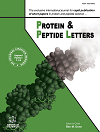
Full text loading...
We use cookies to track usage and preferences.I Understand

Tritrpticin (TRP3) is a peptide belonging to the cathelicidin family and has a broad spectrum of antimicrobial activity. However, this class of biomolecules can be easily degraded in the body, making it necessary to use an efficient transport system. The ability to form stable nanostructures from the interaction of glycyrrhizin saponin with the pluronic polymer F127 was demonstrated, forming mixed biopolymeric micelles, highly promising as drug carriers.
The present work sought to understand the physicochemical interaction of the antimicrobial peptide TRP3 with the mixed polymeric micelle made from pluronic F127 and the saponin glycyrrhizin.
The interaction of tritrpticin with mixed nanostructured micelles was evaluated through fluorescence spectroscopy and fluorescence quenching with acrylamide. The experiments were performed at room temperature (25 ± 1°C), adopting an excitation wavelength set to 280 nm and emission between 300 and 500 nm, with a slit of 5 nm.
The interaction of the cationic peptide tritrpticin with the mixed biopolymeric micelles was observed through the blue shift of the fluorescence emission to shorter wavelengths, proving the change of tryptophan to a more hydrophobic environment. Through the fluorescence suppression technique, it was possible to indicate the location of the peptide in the mixed micelles, proving tritrpticin to be partially inserted inside them.
It was concluded that tritrpticin interacted with mixed nanostructured micelles, forming a promising system for biotechnological applications.

Article metrics loading...

Full text loading...
References


Data & Media loading...